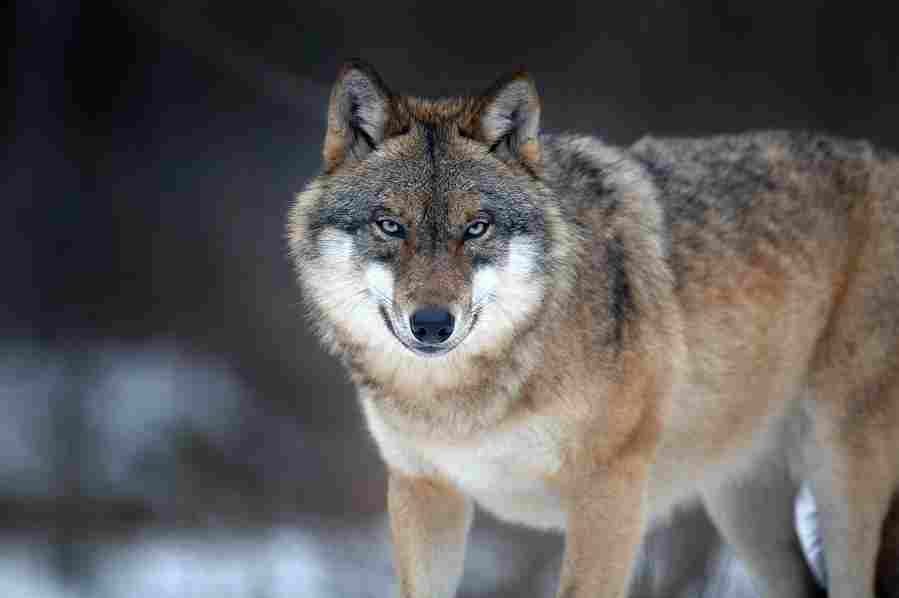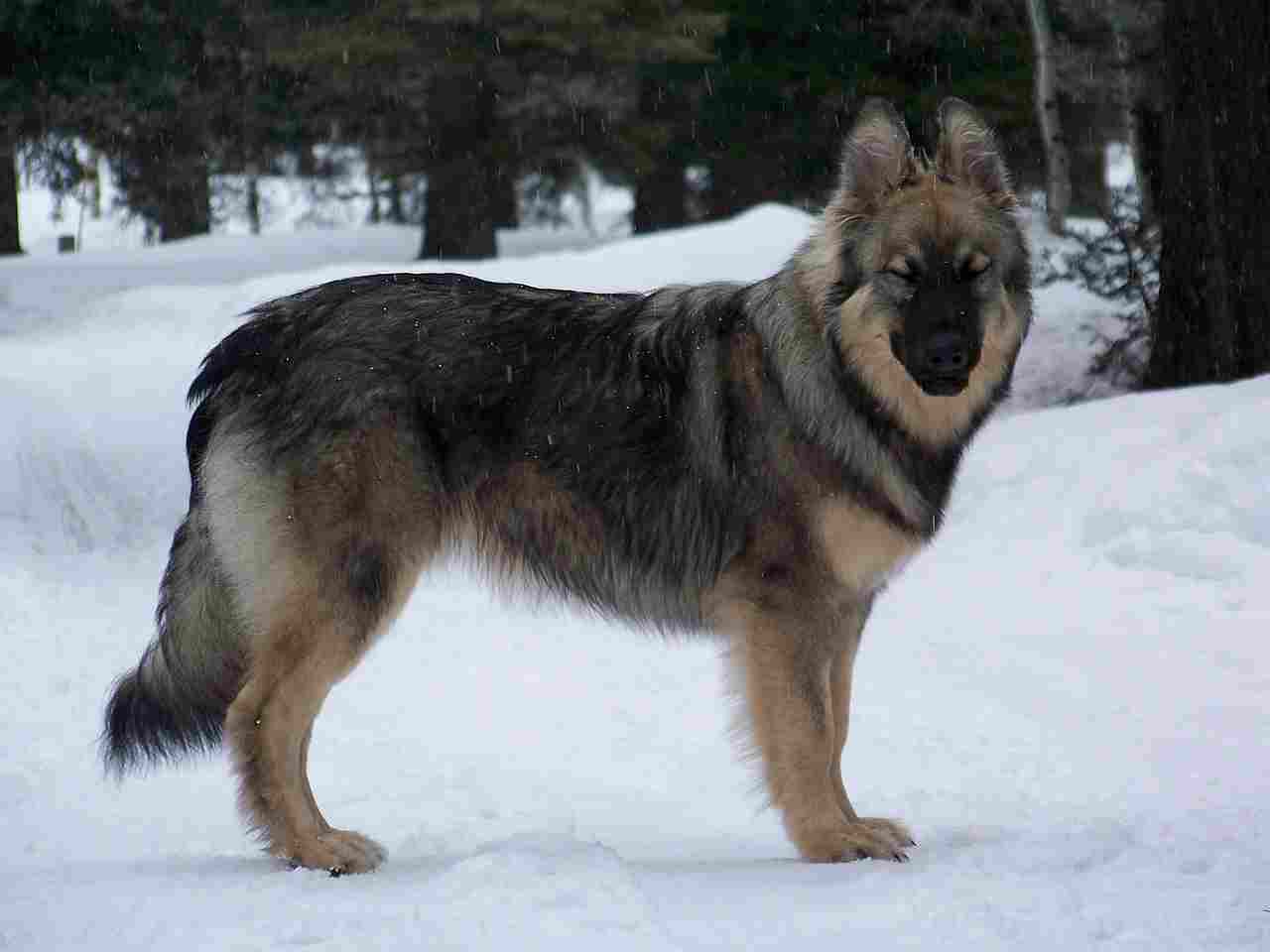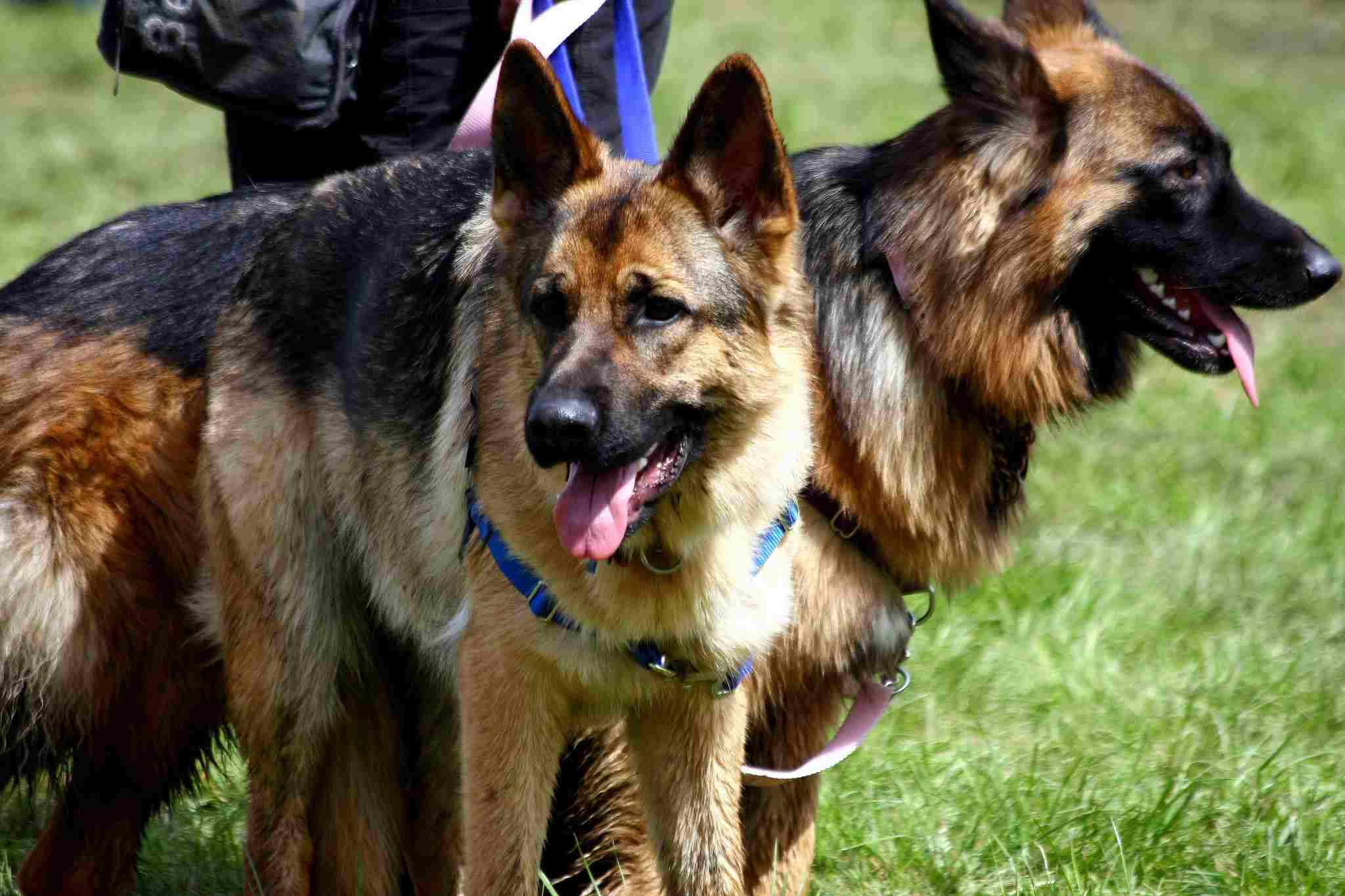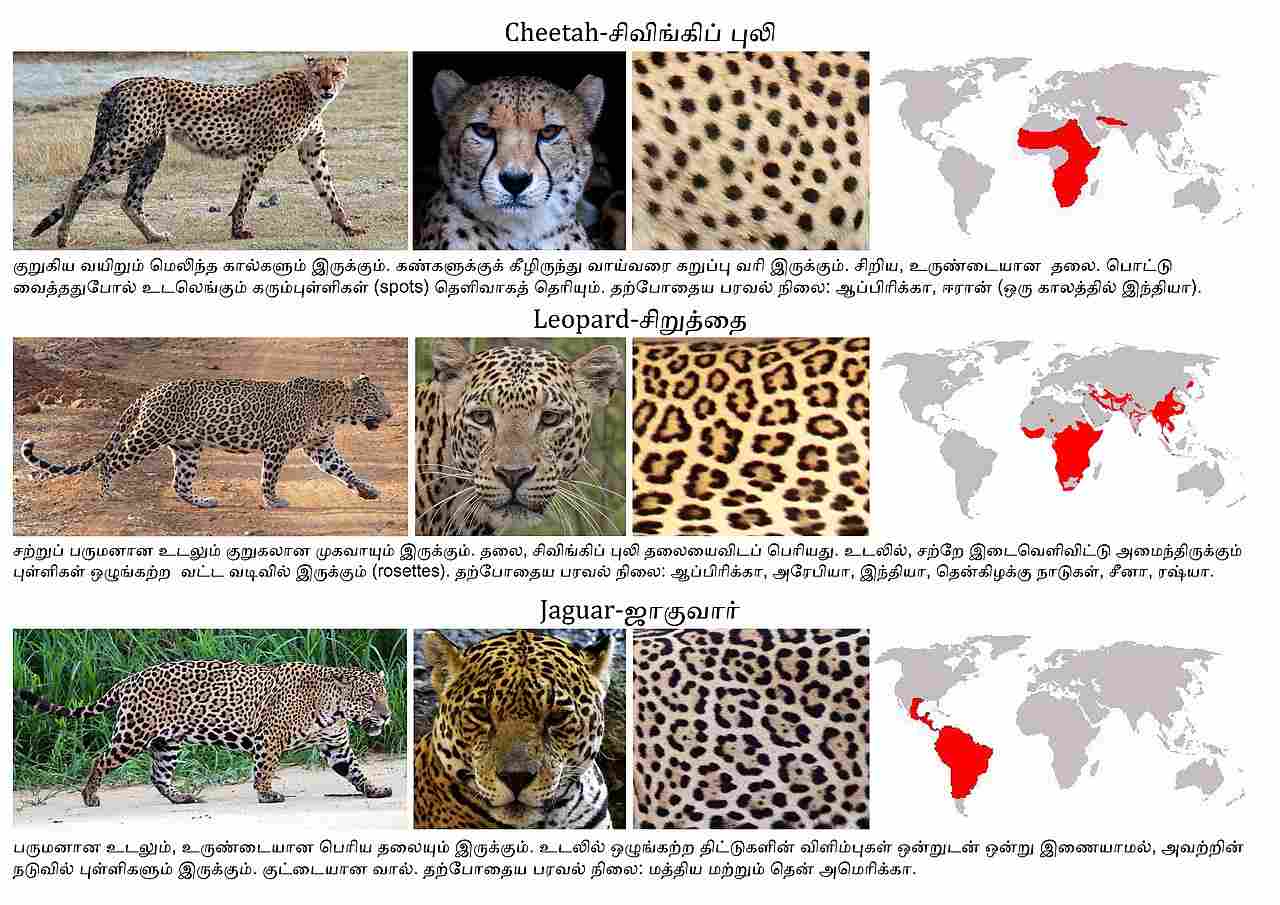German Shepherd Vs Wolf Size, Weight. Ecological Comparison
A single wolf has the advantage over a German Shepherd in a physical confrontation. The wolf is much larger, heavier, stronger, and more aggressive. These factors contribute to the wolf’s predatory instincts, making it more likely to overpower and potentially kill a German Shepherd.
In this article, we will compare the size, weight, strength, aggression, and predatory instincts of these two animals.
Reasons Why a Wolf Will Win a German Shepherd In a Fight/Physical Confrontation
I). Size and Weight Advantages
One of the main reasons why a wolf would win in a fight against a German Shepherd is its size and weight advantage. Wolves are significantly larger and heavier than German Shepherds, giving them a physical advantage in a confrontation. A fully grown male wolf can weigh up to 175 pounds, while a German Shepherd typically weighs between 50 to 90 pounds. This size difference gives the wolf more power and strength to overpower its opponent.

II). Superior Strength and Endurance
In addition to their size advantage, wolves also possess superior strength and endurance compared to German Shepherds. Wolves are built for endurance hunting, capable of covering long distances at a steady pace. Their muscular bodies and strong jaws allow them to take down large prey, showcasing their physical prowess. German Shepherds, although strong and agile, cannot match the strength and endurance of a wolf.
III). Higher Aggressiveness and Predatory Instincts
Wolves are known for their high level of aggressiveness and predatory instincts. They are apex predators, adapted to hunt and kill efficiently. German Shepherds, on the other hand, are domesticated dogs bred for companionship and work. While they may display protective instincts, they lack the natural predatory drive and aggression of a wolf. In a fight or physical confrontation, the wolf’s aggressive nature and predatory instincts give it a significant advantage over a German Shepherd.
Therefore, the size and weight advantages, superior strength and endurance, as well as the higher aggressiveness and predatory instincts of a wolf make it more likely to win in a fight or physical confrontation against a German Shepherd.
*Details of Comparison
1). Taxonomy
The taxonomy of the German Shepherd and the wolf reveals interesting similarities and differences between the two species. The German Shepherd belongs to the Canis lupus familiaris subspecies, which is a domesticated form of the gray wolf (Canis lupus). While they share the same genus and species, there are distinct variations in their physical characteristics and behavior.
In terms of appearance, the German Shepherd has been selectively bred for specific traits, resulting in a wide range of coat colors and patterns. On the other hand, the wolf typically has a thick, dense coat that provides insulation in various climates. This difference in coat variation is one of the distinguishing features between the two animals.
When comparing the taxonomy of the German Shepherd and the wolf, it is important to note that the German Shepherd is a domesticated breed, while the wolf is a wild animal. This domestication process has led to differences in behavior and adaptability to human environments.
2). Appearance
The appearance of both the German Shepherd and the wolf encompasses various aspects, including their coat, fur, skin, camouflage, and stature.
Starting with the coat, the German Shepherd has been selectively bred for specific traits, resulting in a wide range of coat colors and patterns. This breed can have a short or long coat, with variations in texture and thickness. On the other hand, the wolf typically has a thick, dense coat that provides insulation in various climates. Their fur can range from gray to brown, with some individuals having a mix of colors.
In terms of camouflage, both the German Shepherd and the wolf have adaptations that help them blend into their surroundings. The German Shepherd’s coat colors and patterns can provide some level of camouflage in certain environments. Similarly, the wolf’s fur coloration allows it to blend in with its natural habitat, making it less visible to prey and potential threats.
When it comes to stature and build, the German Shepherd is a medium to large-sized dog breed with a well-muscled body. They have a strong and athletic build, which contributes to their agility and endurance. On the other hand, the wolf is generally larger and more robust than the German Shepherd. Wolves have a lean and powerful body, designed for efficient hunting and survival in the wild.
Drawing from the discussion so far, while both the German Shepherd and the wolf have distinct appearances, the German Shepherd’s appearance has been influenced by selective breeding, resulting in a wider range of coat variations. The wolf, on the other hand, has adaptations that allow it to blend into its natural environment and possesses a more robust stature compared to the German Shepherd.
3). Size
When comparing the size of the German Shepherd and the wolf, we need to consider their total body length and height at the shoulders. The German Shepherd typically measures between 22 to 26 inches in height at the shoulders, while their total body length can range from 22 to 26 inches. On the other hand, the wolf is generally larger, with a height at the shoulders ranging from 26 to 32 inches and a total body length of 4.5 to 6.5 feet.
The German Shepherd’s size is influenced by selective breeding, which has resulted in a standardized height and length range for the breed. In contrast, the wolf’s size is determined by its natural habitat and evolutionary adaptations. Wolves have larger bodies to accommodate their hunting and survival needs in the wild.
It’s important to note that these size ranges can vary depending on factors such as genetics, nutrition, and overall health. However, on average, the wolf is larger and more imposing in size compared to the German Shepherd.
Therefore, when it comes to size, the wolf surpasses the German Shepherd in both height at the shoulders and total body length. The wolf’s larger size is a result of its natural adaptations for survival in the wild, while the German Shepherd’s size is influenced by selective breeding.
4). Weight
When comparing the weight of a German Shepherd and a wolf, it’s evident that the wolf outweighs the German Shepherd by a significant margin. The average weight of a German Shepherd ranges from 50 to 90 pounds, depending on factors such as genetics, diet, and overall health. On the other hand, wolves can weigh anywhere between 70 to 180 pounds, with some larger subspecies reaching weights of up to 200 pounds.
The weight difference between these two animals is primarily due to their distinct lifestyles and ecological roles. German Shepherds are domesticated dogs bred for companionship and various working purposes, while wolves are wild predators that require substantial body mass to hunt and survive in their natural habitats.
The wolf’s heavier weight provides it with several advantages in terms of strength and endurance. It allows them to take down larger prey and defend their territories more effectively. In contrast, the German Shepherd’s weight is optimized for agility and versatility, enabling them to perform tasks such as herding, search and rescue, and police work.
5). Speed and Agility
Wolves are known for their exceptional speed and agility, allowing them to chase down prey and navigate through various terrains with ease. They can reach speeds of up to 35 miles per hour and are capable of making sharp turns and quick changes in direction.
On the other hand, German Shepherds are also agile and swift, but their speed is not on par with that of a wolf. They are known for their endurance and ability to maintain a steady pace over long distances. German Shepherds can reach speeds of around 30 miles per hour, which is impressive for a domesticated dog.
The difference in speed and agility between these two animals can be attributed to their evolutionary adaptations and ecological roles. Wolves rely on their speed and agility to hunt and capture prey, while German Shepherds have been selectively bred for tasks that require a combination of speed, agility, and endurance, such as herding and search and rescue operations.
While both the German Shepherd and the wolf possess impressive speed and agility, the wolf’s natural athleticism gives it an edge in terms of chasing down prey and maneuvering through challenging environments. However, the German Shepherd’s agility and endurance make it well-suited for the tasks it has been bred for.
6). Bite Force
When comparing the bite force of a German Shepherd and a wolf, it is important to consider the psi (pounds per square inch) exerted by each animal. The bite force of an animal is a measure of its jaw strength and can provide insight into its hunting and feeding capabilities.
Wolves have an incredibly powerful bite force, with an average psi ranging from 400 to 1200. This allows them to exert immense pressure when biting down on their prey, enabling them to crush bones and tear through tough flesh. Their strong jaws are essential for taking down large ungulates and other formidable prey.
On the other hand, German Shepherds also possess a strong bite force, but it is not as powerful as that of a wolf. The average psi of a German Shepherd’s bite force ranges from 230 to 250. While this is still impressive for a domesticated dog, it is significantly lower than that of a wolf.
The difference in bite force between these two animals can be attributed to their evolutionary adaptations and ecological roles. Wolves, as apex predators, have evolved to have a bite force that allows them to efficiently kill and consume their prey. German Shepherds, on the other hand, have been selectively bred for tasks that require a combination of bite force, intelligence, and trainability.
While both the German Shepherd and the wolf possess strong bite forces, the wolf’s bite force is significantly more powerful.
7). Overall Physical Capacity (Which is Stronger?)
When comparing the overall physical capacity of a German Shepherd and a wolf, several factors need to be evaluated and compared. These factors include size, weight, speed and agility, bite force, and overall hunting and fighting abilities.
In terms of size and weight, wolves are generally larger and heavier than German Shepherds. Wolves can reach lengths of up to 6 feet and weigh between 70 to 120 pounds, while German Shepherds typically measure around 2 feet tall and weigh between 50 to 90 pounds. This size advantage gives wolves a physical edge in a violent confrontation.
Speed and agility are also important factors to consider. Wolves are known for their incredible speed and agility, allowing them to chase down and capture prey with ease. German Shepherds, although agile and fast for a domesticated dog, cannot match the speed and agility of a wolf.
When it comes to bite force, wolves have a significantly more powerful bite than German Shepherds. The strong jaws of a wolf enable it to exert immense pressure, allowing it to crush bones and tear through tough flesh. German Shepherds have a strong bite force for a domesticated dog, but it is not as powerful as that of a wolf.
Therefore, based on the factors we have evaluated and compared, it is clear that wolves have a stronger overall physical capacity than German Shepherds. In a violent confrontation between the two, the size, weight, speed, agility, and powerful bite force of a wolf would likely cause the death of the German Shepherd.
8). Habitat
When comparing the habitat of a German Shepherd and a wolf, it is important to consider their respective ecosystems and geographic ranges.
German Shepherds are domesticated dogs that have adapted to living in various environments, including urban, suburban, and rural areas. They are highly versatile and can thrive in different climates and landscapes. However, their natural habitat is typically human settlements where they serve as companions, working dogs, or service animals.
On the other hand, wolves are wild animals that inhabit a wide range of ecosystems, including forests, tundras, mountains, and grasslands. They have a much larger geographic range compared to German Shepherds. Wolves are found in North America, Europe, Asia, and even parts of Africa. They have evolved to survive in diverse environments and are well-adapted to their specific habitats.
Therefore, while German Shepherds can adapt to various habitats, their natural habitat is human settlements. Wolves, on the other hand, have a much broader geographic range and can thrive in a variety of ecosystems.
9). Lifespan
German Shepherds have an average lifespan of around 9 to 13 years. However, with proper care, nutrition, and regular veterinary check-ups, some German Shepherds can live up to 15 years or more. Factors such as genetics, diet, exercise, and overall health play a significant role in determining the lifespan of a German Shepherd.
On the other hand, wolves have a shorter lifespan compared to German Shepherds. In the wild, wolves typically live for about 6 to 8 years. This is due to various factors such as predation, competition for resources, and the challenges of surviving in their natural habitat. In captivity, where they are protected from these threats, wolves can live up to 12 years or more.
It is important to note that these lifespan ranges are averages and can vary depending on individual circumstances and environmental factors. Both German Shepherds and wolves can live longer or shorter lives based on their specific conditions.
Therefore, German Shepherds generally have a longer lifespan compared to wolves, both in the wild and in captivity. However, it is crucial to provide proper care and attention to ensure the health and well-being of both these animals throughout their lives.
10). Behavior
When comparing the behavior of German Shepherds and wolves, several key differences emerge. One significant distinction is in their feeding habits. German Shepherds are domesticated animals and are typically fed a balanced diet by their owners. They rely on humans for their food and do not need to hunt for their meals. On the other hand, wolves are wild animals and are skilled hunters. They have a complex social structure within their pack and work together to bring down prey for sustenance.
Aggression is another aspect where German Shepherds and wolves differ. German Shepherds are known for their loyalty and protective nature, making them excellent guard dogs. However, they can display aggression towards unfamiliar individuals or in certain situations. Wolves, on the other hand, are naturally more aggressive due to their survival instincts and territorial nature.
Vocalization is also distinct between the two species. German Shepherds are known for their wide range of vocalizations, including barking, growling, and howling. These vocalizations serve various purposes, such as communication, warning, or expressing emotions. Wolves, on the other hand, have a more limited vocal repertoire, primarily consisting of howling. Howling is crucial for pack communication, territory marking, and coordinating hunts.
In terms of social behavior, German Shepherds are highly social animals and form strong bonds with their human families. They thrive on companionship and interaction. Wolves, on the other hand, have a complex social structure within their pack. They rely on cooperation and hierarchy to maintain order and ensure the survival of the group.
When it comes to parenting, German Shepherds are attentive and protective parents. They care for their puppies, providing them with nourishment, warmth, and guidance. Wolves also exhibit strong parental instincts, with both parents participating in raising their young.
Therefore, the behavior of German Shepherds and wolves differs significantly due to their domestication and wild nature, respectively. German Shepherds rely on humans for food, display loyalty and protective behavior, have a wide range of vocalizations, are highly social, and exhibit attentive parenting. Wolves, on the other hand, are skilled hunters, naturally more aggressive, have limited vocalizations primarily consisting of howling, have a complex social structure within their pack, and exhibit strong parental instincts.

11). Reproduction
When comparing the reproduction of German Shepherds and wolves, several key differences emerge. German Shepherds are viviparous, meaning they give birth to live young. The gestation period for German Shepherds is typically around 63 days. During this time, the female dog undergoes physical and hormonal changes to prepare for the birth of her puppies. German Shepherds can have litters ranging from 4 to 9 puppies, with an average litter size of 6.
Wolves, on the other hand, are also viviparous and give birth to live young. The gestation period for wolves is slightly longer, lasting around 63 to 65 days. Wolf packs typically have an alpha male and female, who are the dominant breeding pair. The alpha female gives birth to the pups, and the entire pack participates in raising and caring for them. Wolf litters can range from 4 to 6 pups, with an average litter size of 5.
In terms of reproduction, German Shepherds and wolves have similar reproductive methods, being viviparous and giving birth to live young. However, there are slight differences in the gestation period and litter size between the two species. German Shepherds have a gestation period of around 63 days and an average litter size of 6, while wolves have a gestation period of 63 to 65 days and an average litter size of 5.
12). Danger Posed to Humans
Wolves are more dangerous than German Shepherds for several reasons including their size, bite force, aggressiveness, and diseases.
German Shepherds are domesticated dogs that have been bred for centuries to be loyal and protective companions. They are typically not aggressive towards humans unless they perceive a threat to themselves or their owners. German Shepherds are commonly kept as family pets and are known for their ability to form strong bonds with their human families.
Wolves, on the other hand, are wild animals that generally avoid human settlements. While they may occasionally come close to human-populated areas in search of food, they are typically wary of humans and will try to avoid direct contact. However, it is important to note that wild wolves are unpredictable and can become aggressive if they feel threatened or cornered. Instances of wolf attacks on humans are rare, but they can occur, especially in areas where human encroachment on wolf habitats is high.
In terms of the rate of human deaths caused, German Shepherds are not known to be a significant threat to human safety. They are generally well-trained and socialized, making them unlikely to cause harm to humans. On the other hand, while wolf attacks on humans are rare, they can be more dangerous due to the size and strength of the animal. Precautions should be taken if encountering a wolf in the wild, such as maintaining a safe distance and avoiding any actions that may provoke the animal.
Therefore, while both German Shepherds and wolves have the potential to pose a danger to humans, the risk is generally higher with wild wolves due to their natural instincts and size. It is important to exercise caution and respect when encountering any wild animal, including wolves, to ensure the safety of both humans and the animals themselves.

13). Intelligence
German Shepherds are known for their high level of intelligence and trainability. They are often used as working dogs in various fields such as search and rescue, police work, and service dogs. Their intelligence allows them to quickly learn and follow commands, making them highly efficient in their tasks.
Wolves, on the other hand, are also highly intelligent animals. They have complex social structures and exhibit advanced problem-solving skills. Wolves are known for their ability to communicate and cooperate within their packs, which requires a certain level of intelligence and understanding.
In terms of which animal is more intelligent, it is difficult to make a definitive comparison. Both German Shepherds and wolves possess unique cognitive abilities that are suited to their respective environments and lifestyles. German Shepherds have been selectively bred for generations to enhance their intelligence and working capabilities, while wolves have evolved their intelligence to survive and thrive in the wild.
Therefore, both German Shepherds and wolves demonstrate high levels of intelligence, albeit in different ways. German Shepherds excel in tasks that require obedience and problem-solving skills, while wolves showcase their intelligence through their social dynamics and adaptability in the wild.
14). Tracks
When comparing the tracks of a German Shepherd and a wolf, there are some noticeable differences. German Shepherds have distinct paw prints that are typically larger than those of wolves. Their tracks show clear imprints of their four toes and a pad, which are well-defined and evenly spaced. The size and shape of the tracks can vary depending on the individual dog’s size and weight.
On the other hand, wolf tracks are larger and more elongated compared to those of German Shepherds. Wolves have larger paws with longer toes, which leave deeper imprints in the ground. Their tracks often show claw marks, which are absent in the tracks of German Shepherds. Additionally, wolf tracks tend to have a more irregular pattern due to their wider range of motion and agility.
In terms of tracking ability, both German Shepherds and wolves have exceptional skills. German Shepherds are commonly used in search and rescue operations, where their tracking abilities are put to the test. They can follow scents and track individuals over long distances.
Wolves, being wild animals, rely heavily on their tracking skills for hunting and territorial marking. They can track prey for miles and navigate through various terrains with ease.
Therefore, while both German Shepherds and wolves have impressive tracking abilities, their tracks differ in size, shape, and pattern. German Shepherds have more defined and evenly spaced tracks, while wolves leave larger, elongated tracks with claw marks.
15). Conservation Status
When it comes to the conservation status of German Shepherds and wolves, there are significant differences. German Shepherds, being domesticated dogs, are not considered endangered or threatened. They are one of the most popular dog breeds worldwide and are bred in large numbers for various purposes, including companionship, working roles, and show competitions. The population of German Shepherds is stable and well-managed.
On the other hand, wolves have a more precarious conservation status. Many wolf species, such as the gray wolf, are listed as endangered or threatened in several regions. The main threats to the survival of wild wolf populations include habitat loss, human-wildlife conflict, illegal hunting, and the decline of prey species. These factors have led to a significant reduction in wolf populations and their range.
Conservation efforts for wolves focus on habitat protection, reintroduction programs, and managing human-wolf interactions. Various organizations and government agencies work together to ensure the long-term survival of wolf populations and maintain the ecological balance they provide.
Therefore, while German Shepherds are not at risk of extinction and have a stable population, wolves face significant conservation challenges. The conservation status of wolves highlights the importance of protecting and preserving their habitats and implementing measures to mitigate human-wildlife conflicts.

Wolf Shepherd Mix Characteristics
The Wolf Shepherd Mix, also known as the Wolf Shepherd Hybrid, is a unique breed that combines the characteristics of both wolves and German Shepherds. This mix is not a naturally occurring breed, but rather a result of intentional breeding between a wolf and a German Shepherd.
In terms of genus and species, the Wolf Shepherd Mix is a cross between the Canis lupus (wolf) and Canis lupus familiaris (German Shepherd). This combination results in a hybrid that possesses traits from both species, creating a distinctive and fascinating breed.
One of the most notable physical features of the Wolf Shepherd Mix is its size. These hybrids tend to be larger than German Shepherds, often resembling the size of a wolf. They have a strong and muscular build, with a thick coat that can vary in color and pattern. This coat helps them adapt to different climates and environments.
Identifying a Wolf Shepherd Mix can be challenging, as their appearance can vary depending on the individual dog and the percentage of wolf genetics they possess. However, some common characteristics include a wolf-like face, erect ears, and a bushy tail. Their eyes may also have a distinct shape and coloration.
It’s important to note that while the Wolf Shepherd Mix shares some physical similarities with both wolves and German Shepherds, there are also noticeable differences. For example, their temperament can vary, with some hybrids exhibiting more wolf-like behaviors such as independence and a strong prey drive. Additionally, their socialization needs may differ from purebred German Shepherds.
Therefore, the Wolf Shepherd Mix is a fascinating breed that combines the physical features and traits of both wolves and German Shepherds.
Can a German Shepherd Kill a Wolf?
On average, a German Shepherd would not be able to kill a wolf. While German Shepherds are strong and intelligent dogs, wolves are larger and more powerful predators. Wolves have evolved over centuries to be highly efficient hunters, with sharp teeth and strong jaws that can take down large prey. German Shepherds, on the other hand, were bred for herding and guarding purposes, and while they have a strong bite force, it is not comparable to that of a wolf.
In terms of physical attributes, wolves have a significant advantage over German Shepherds. Wolves are larger and have a more robust build, allowing them to overpower their prey. They also have a thicker coat that provides protection against the elements and potential injuries during hunting. German Shepherds, although athletic and agile, are not built for the same level of strength and endurance as wolves.
Furthermore, wolves are highly social animals that live and hunt in packs, which gives them an advantage in terms of coordination and strategy. German Shepherds, while trainable and capable of working in teams, are primarily bred to work alongside humans rather than in a pack.
Therefore, while German Shepherds are impressive dogs, they are not typically capable of killing a wolf. Wolves are larger, more powerful, and have evolved specifically for hunting and taking down prey.
Are German Shepherds Part Wolf?
While German Shepherds are not part wolf, they are closely related and descend from gray wolves. German Shepherds share a common ancestor with wolves, which is why they have some physical and behavioral similarities. However, it is important to note that German Shepherds have been selectively bred for specific traits over many generations, resulting in distinct differences from their wolf ancestors.
In terms of physical characteristics, German Shepherds have a similar body structure and coat color to wolves. They both have a strong and muscular build, with a thick double coat that provides insulation and protection. Additionally, German Shepherds and wolves both have sharp teeth and powerful jaws, although wolves have a stronger bite force.
Behaviorally, German Shepherds and wolves also share some traits. They are both intelligent, loyal, and protective animals. German Shepherds have a strong instinct to guard and protect their family, which is a trait inherited from their wolf ancestors.
However, it is important to remember that German Shepherds have been domesticated for centuries and have been selectively bred for specific purposes, such as herding and guarding. They have been shaped by human intervention and are distinct from their wild wolf relatives.
Therefore, while German Shepherds are not part wolf, they are closely related and share a common ancestry with gray wolves. Their physical and behavioral similarities can be attributed to their shared heritage, but German Shepherds have been selectively bred for specific traits and have distinct differences from wolves.
Are German Shepherds Closely Related to Wolves?
German Shepherds are closely related to wolves as descendants, although they are not considered to be very closely related in terms of genetic similarity. While German Shepherds share a common ancestor with wolves, there are other dog breeds that are more closely related to wolves. One example of a dog breed that is closely related to wolves is the Alaskan Malamute.
The Alaskan Malamute is a breed that has retained many physical and behavioral traits of its wolf ancestors. They have a similar appearance to wolves, with a thick double coat and a strong, muscular build. Additionally, Alaskan Malamutes have a high prey drive and a strong instinct to roam, which are traits inherited from their wolf ancestors.
In contrast, German Shepherds have been selectively bred for specific purposes, such as herding and guarding. While they share some physical and behavioral similarities with wolves, they have been shaped by human intervention and have distinct differences from their wild wolf relatives.
Generally, while German Shepherds are not as closely related to wolves as some other dog breeds, they still share a common ancestry and have some similarities in terms of physical characteristics and behaviors.
Why Do German Shepherds Look Like Wolves?
German Shepherds look like wolves due to their common ancestry and evolution. They share similarities in their skeletal structure, which contributes to their wolf-like appearance. Both German Shepherds and wolves have a strong, muscular build and a similar body shape. Additionally, some behaviors are shared between the two, such as their alertness, intelligence, and protective instincts.
The physical resemblance between German Shepherds and wolves is not a coincidence. It is a result of selective breeding and the preservation of certain traits that were desirable for specific purposes. Over time, humans have bred German Shepherds to have certain physical characteristics that resemble wolves, such as their pointed ears and bushy tails. These traits not only give them a striking appearance but also serve practical purposes, such as enhancing their hearing and communication abilities.
While German Shepherds may look like wolves, it’s important to remember that they are domesticated dogs with distinct differences. Their wolf-like appearance should not be confused with their behavior or temperament. German Shepherds are loyal, trainable, and make excellent companions, but they are not wild animals.
Conclusion
I). SIMILARITIES
In comparing German Shepherds and wolves, there are several similarities between these two animals. Both German Shepherds and wolves belong to the Canidae family, which means they share a common ancestry.
They also have similar physical characteristics, such as sharp teeth, keen senses, and a strong sense of loyalty to their pack or family. Additionally, both German Shepherds and wolves are highly intelligent and have the ability to learn and adapt to their environment.
II). DIFFERENCES
Despite the similarities, there are also significant differences between German Shepherds and wolves. One of the main differences is their domestication status.
German Shepherds have been selectively bred for specific traits and have been domesticated for centuries, while wolves remain wild animals. Another difference is their size and weight. German Shepherds are generally smaller and lighter than wolves, with an average weight of 50-90 pounds, while wolves can weigh up to 175 pounds or more.
In terms of behavior, German Shepherds are known for their loyalty, trainability, and protective nature, making them excellent working dogs and companions. Wolves, on the other hand, have a more complex social structure and exhibit pack behavior, with a dominant alpha pair leading the group. Wolves also have a more specialized diet, primarily consisting of meat, while German Shepherds can thrive on a balanced diet of meat and plant-based foods.














